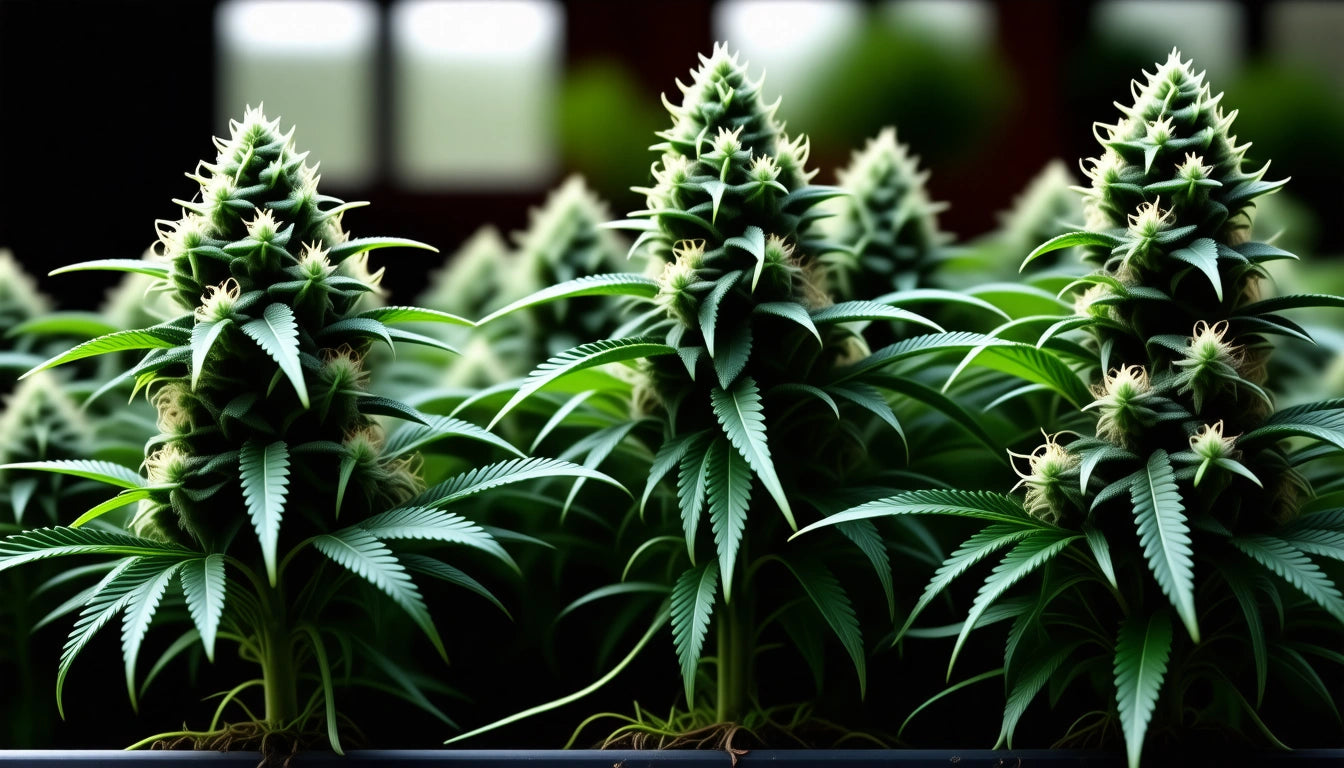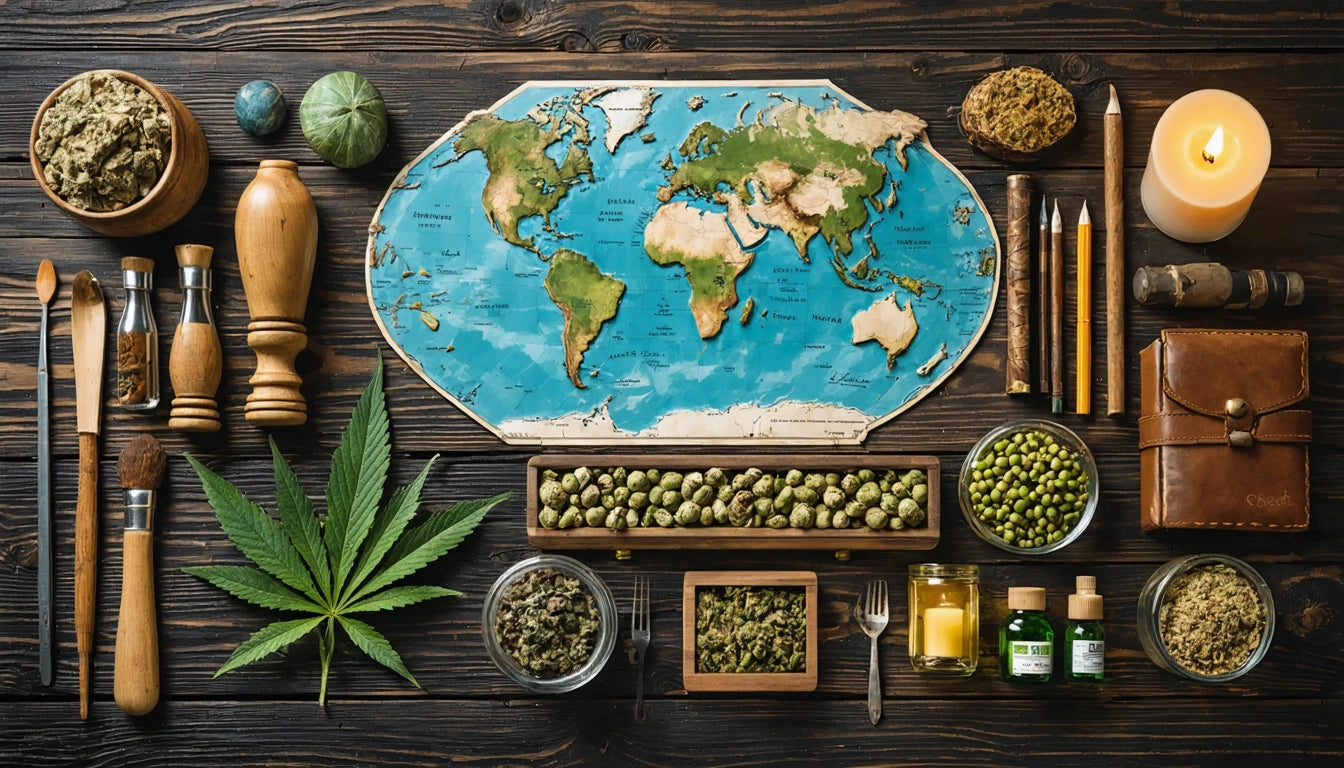Table of Contents
When to Harvest Pot Plants: A Comprehensive Guide
Determining the perfect moment to harvest pot plants can significantly impact potency, flavor, and overall yield. Whether you're a novice grower or seasoned cultivator, understanding the subtle signs of readiness is crucial for achieving your desired effects. This guide explores the key indicators that signal when your cannabis plants have reached their peak maturity and are ready for harvest.
Visual Indicators: How to Know Your Pot Plants Are Ready
Several visual cues can help determine when pot plants are approaching harvest time. These indicators work together to give you a comprehensive picture of your plant's maturity:
- Pistil coloration: When 70-90% of pistils (hair-like structures) have darkened from white to orange, red, or brown, your plants are likely ready.
- Leaf yellowing: Fan leaves naturally begin to yellow and may drop as the plant redirects energy to flower production.
- Bud density: Mature buds feel firm when gently squeezed and stop developing new white pistils.
- Resin production: Trichomes become more abundant and visible, giving buds a frosty, sticky appearance.
According to expert guidelines on harvest timing, these visual indicators should be used in combination rather than relying on any single sign.
Trichome Inspection: The Most Accurate Method
While visual cues are helpful, examining trichomes provides the most precise indication of when to harvest pot plants. Trichomes are tiny, mushroom-shaped glands that contain cannabinoids and terpenes. Their appearance changes as the plant matures:
- Clear trichomes: Too early to harvest, low potency
- Cloudy/milky trichomes: Peak THC production, energetic effects
- Amber trichomes: THC converting to CBN, more sedative effects
For most growers, the ideal harvest window occurs when 70-90% of trichomes have turned cloudy with 10-30% amber. This ratio can be adjusted based on your desired effects. A jeweler's loupe or digital microscope with 30-60x magnification is essential for proper trichome inspection.
Timing Considerations for Different Growing Environments
Indoor Harvest Timing
Indoor growers have greater control over environmental factors, making harvest timing more predictable. Generally, indica-dominant strains reach maturity in 7-9 weeks of flowering, while sativas may require 10-12 weeks or longer. Research on optimal potency suggests that monitoring trichome development becomes crucial during the final two weeks of the expected flowering period.
When to Harvest Outdoor Pot
Outdoor growers face additional considerations when determining when to harvest pot plants:
- Seasonal timing: Most outdoor plants finish between late September and early November in the Northern Hemisphere.
- Weather forecasts: Impending frost, heavy rain, or high humidity can force an early harvest to prevent mold.
- Pest pressure: Increasing pest activity may necessitate harvesting slightly earlier than ideal.
After harvesting, proper storage becomes essential for preserving potency. Using appropriate containers with secure, child-resistant lids not only keeps your product fresh but also ensures compliance with safety regulations if you're growing commercially or in a household with children.
Harvesting Male Plants: Why Timing Matters
When to harvest a male pot plant differs significantly from harvesting females. Male plants don't produce buds but instead develop pollen sacs. If you're not breeding:
- Identify males early (usually 2-3 weeks into flowering)
- Remove them before pollen sacs open to prevent fertilization of female plants
- Consider harvesting male plants for alternative uses like hemp fiber or breeding
If intentionally breeding, collect pollen when sacs are mature but before they fully open by carefully removing them and storing in a cool, dry place.
Regional Considerations for Harvest Timing
Geographic location significantly impacts when pot plants are ready to harvest. For example, when to harvest pot plants in NY or other northern regions often means watching weather forecasts carefully as fall approaches. Northern growers typically:
- Select faster-finishing strains appropriate for shorter growing seasons
- Prepare protective coverings for early frost events
- May need to harvest slightly earlier than ideal if weather deteriorates
Southern growers, by contrast, often have the luxury of extended harvest windows and can wait for optimal trichome development. Studies on maximizing yield show that regional adaptations in harvest timing can significantly impact final results.
Harvesting Best Practices for Quality Preservation
Once you've determined when to harvest your pot plants, follow these best practices for optimal results:
- Harvest in the morning after dew has dried but before temperatures rise
- Use sharp, clean trimming tools to prevent plant damage and contamination
- Consider a progressive harvest, taking upper buds first and allowing lower buds additional time to mature
- Maintain a controlled environment during drying and curing
- Store properly in airtight containers away from light and heat
When deciding when to cut your pot plants, remember that patience often rewards the grower. Rushing the harvest can significantly reduce potency and quality, while waiting for the optimal window ensures the best possible outcome for your cultivation efforts.
By closely monitoring trichome development, understanding strain-specific indicators, and considering your growing environment, you'll be well-equipped to determine precisely when your pot plants are ready to harvest for maximum potency and desired effects.











Leave a comment
All comments are moderated before being published.
This site is protected by hCaptcha and the hCaptcha Privacy Policy and Terms of Service apply.